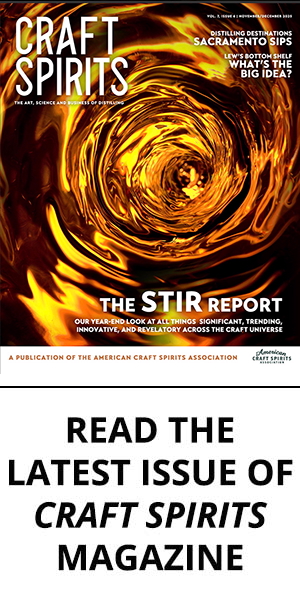The first half of 2022 saw value growth of beverage alcohol reach historic highs, driven by a combination of post-pandemic pent-up demand and price increases.
Although H1 2022 total beverage alcohol volumes (across 20 key markets that make up approximately 75% of total global beverage alcohol volume consumption) have not yet reached pre-pandemic levels, latest findings from IWSR Drinks Market Analysis show that volumes in premium-and-above price bands grew +7% in H1 2022 compared to H1 2019, across the 20 key markets.
Overall, the first half of 2022 was relatively positive for the drinks industry, however, IWSR’s recent consumer survey in October this year, indicates that consumer confidence is starting to weaken in many markets. IWSR data shows early signs of down-trading across many beverage alcohol categories, as well as an increasing focus on reducing quantity but maintaining quality. Consumers are increasingly turning to at-home consumption and will look to the on premise to provide experience-led drinking occasions.
Tequila leads premium+ spirits growth in H1 2022
The first half of 2022 saw spirits in premium+ prices bands gain +6% in volume terms on H1 2021, and +13% on H1 2019.
Premium+ spirit growth remains relatively broad-based across categories, including gin, rum, malt Scotch, and US and Irish whiskey, although agave is a key driver. Premium+ agave-based spirits saw growth of +16% in H1 2022 vs H1 2021; this follows growth of +44% in H1 2020-21, with much of this driven by the tequila category in the US.
Sparkling wine drives premium+ performance in the overall wine category
Sparkling wine drives growth in the overall premium+ wine market. The growth of premium+ sparkling outpaces that of total premium+ wine (+8% vs +1%, H1 2021-22). Champagne and prosecco are growing across a broad base of markets, including the US, France, Japan, and Italy. Growth off a smaller base is also evident in markets such as India, Mexico, and Spain, amongst others.
Continued on following page
Beer growth driven by select markets
While overall beer volumes are lower than pre-pandemic, beer shows recovery in many markets, including healthy ongoing growth in Brazil (+12%, H1 2021-22) and Mexico (+5%, H1 2021-22). Demand in these two markets is driven by a growing younger LDA population that favours beer.
Although volume losses in China and the US drag down the overall category, beer’s rate of decline in the US is easing compared to recent H1 periods. Beer is also well positioned to grow in select markets across SE Asia, Latin America and Africa.
RTD growth moderates and shifts to premium focus
RTD growth is slowing globally, and the US, which holds over 40% share of global RTD volumes, is experiencing a general shift to more premium products (on a smaller volume base), as hard seltzer growth moderates. Positive growth trends across FABs in many markets, including Japan, China, Mexico and the US, also continues. Spirits-based RTDs lead the shift in premium+ RTD growth. The number of spirit-based SKUs on the market in the US has risen by approximately +70% between 2020 and 2022.
Pockets of declining consumer confidence
As costs of living continue to increase, consumer confidence is starting to wane in many countries, especially across Europe, and particularly in the UK. This sentiment, however, contrasts with the relatively optimistic APAC region, with consumers in India and China much more positive about life and finances. The picture in the US is more mixed, and while American consumers remain relatively positive overall, they are growing increasingly cautious. This is especially evident across mid-to-lower income groups.
Early signs of down-trading in select categories
IWSR consumer data shows early signs of downtrading and category switching, with consumers primarily moving away from high volume, lower value beverages, such as wine and beer, and moving into lower volume, higher value categories such as whisky, tequila, gin and Cognac.
Pockets of down-trading are especially evident in markets with neutral-to-negative levels of consumer confidence. In the UK, there are signs of decreases in net spend across most categories within premium-and-below price bands.
The US shows a significant minority of super-high spenders who continue to drive spend in super premium+ segments.
Moderation evolves
In addition to pockets of down-trading, consumer response to tougher economic times appears to be reducing quantity but maintaining quality. Drivers for the moderation trend have subsequently evolved from mostly health concerns to economic ones. Interest in no/low alternatives is particularly high among millennials and those on higher incomes in the US, Canada, UK, Australia and China.
Continued on following page
On-trade recovery will be experience-led
Short-term on-trade growth will be muted due to the economic environment. However, in most markets, on-trade growth rates are higher than those of the off-trade, as the channel continues to recover from the pandemic.
Rising costs of living will increasingly drive consumers back towards at-home consumption; the on-trade will need to focus on delivering experiences in order to compete. Online alcohol sales will continue to grow, although at a more moderate rate following the boost from pandemic lockdowns (+34% value growth in ecommerce, 2021-26, across 16 key markets). This follows ecommerce value growth of +12% in 2019 and almost +43% in 2020 during the height of the pandemic.


